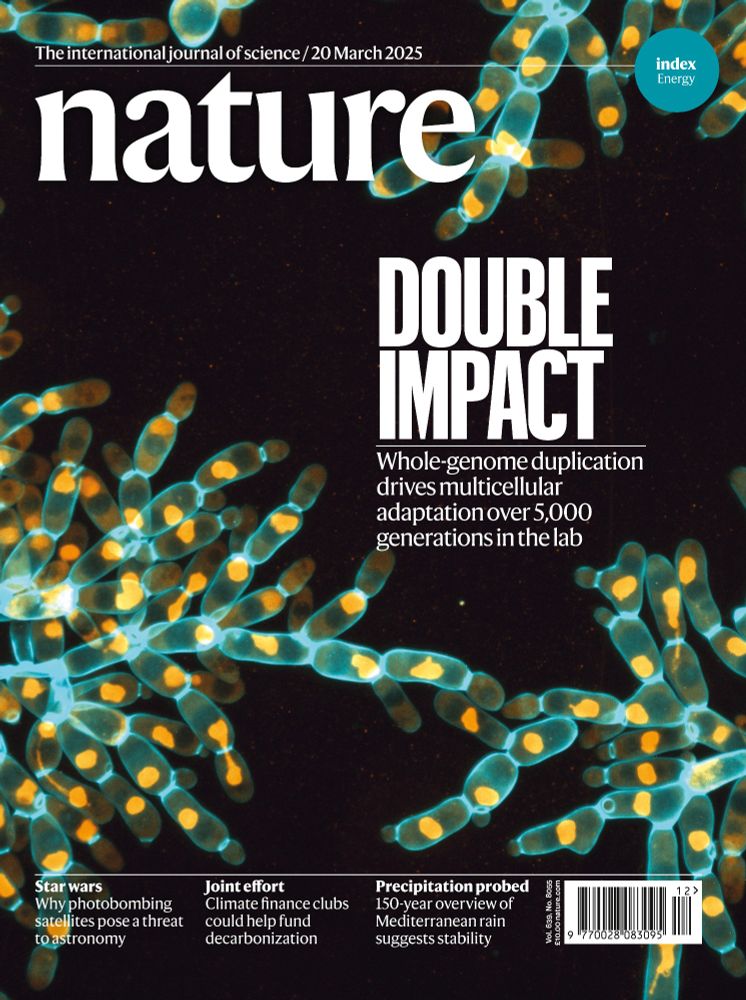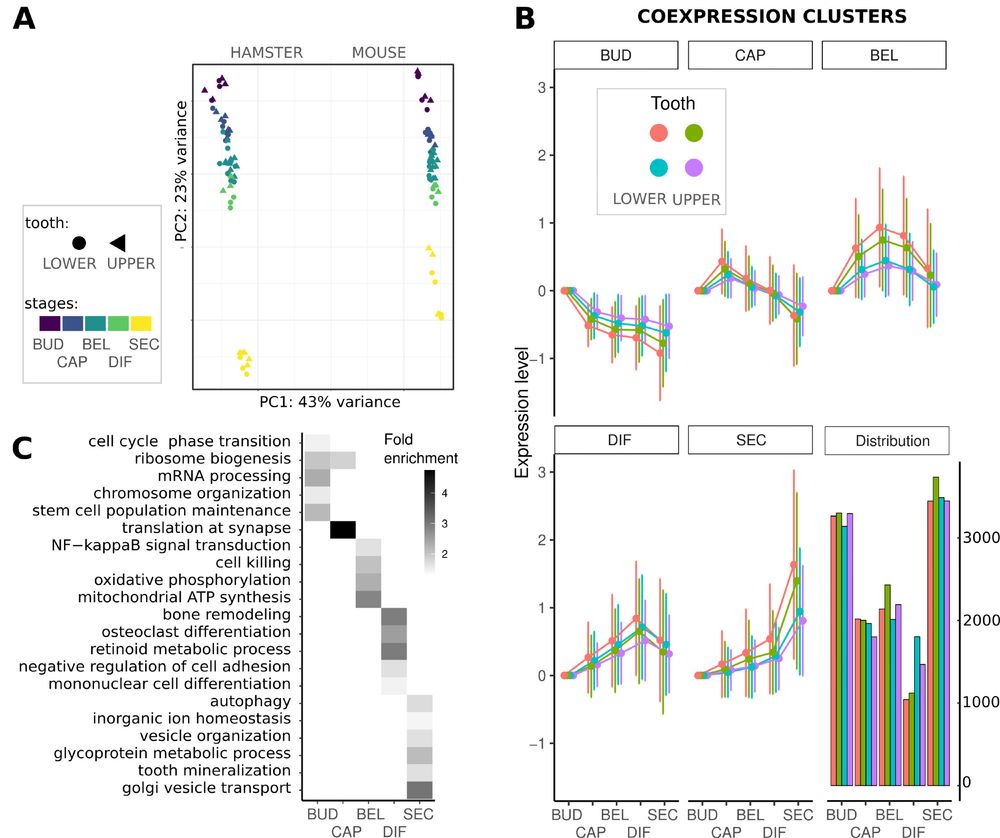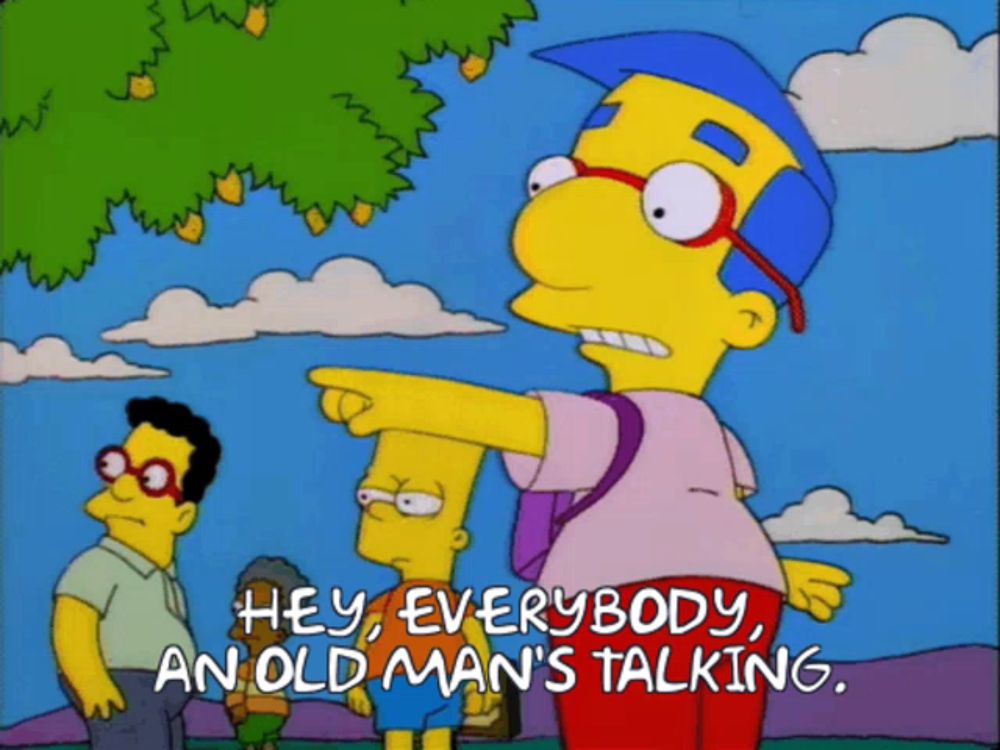Fantastic paper, fantastic thread - thank you, Juan and colleagues, for this great contribution to GBE!
14.11.2025 11:00 — 👍 3 🔁 1 💬 0 📌 0DiegoHarta
@diegoharta.bsky.social
@diegoharta.bsky.social
Fantastic paper, fantastic thread - thank you, Juan and colleagues, for this great contribution to GBE!
14.11.2025 11:00 — 👍 3 🔁 1 💬 0 📌 0
Looking for a cool image to represent the complexity of within-species genomic diversity? Look no further! Beautiful artwork by Binia De Cahsan!
17.11.2025 14:29 — 👍 3 🔁 1 💬 0 📌 0Very proud to share our perspective on "The Genomic Kaleidoscope" doi.org/10.1093/gbe/... out @genomebiolevol.bsky.social
Precious collaboration w/ colleagues across the world, led alongside the amazing @mbrasovives.bsky.social and the one&only @jrotwitguez.bsky.social
Check out his great thread!
80 download of my checklist of actionable items for any researcher to adopt to support an equitable and sustainable scholarly publishing landscape zenodo.org/records/1741...
Still need to do this myself, but I'd love to see printouts on office doors or hallways ;) #AcademicSky #OpenAccess #DiamondOA

The four-fold drain of scientific publishing: Money, Time, Trust, and Control.
Thank you for coming to my TED Talk 🎤
If you’ve read this far and still need convincing, please check out our preprint arxiv.org/abs/2511.04820 and this infographic: doi.org/10.5281/zeno...
10/10

A table showing profit margins of major publishers. A snippet of text related to this table is below. 1. The four-fold drain 1.1 Money Currently, academic publishing is dominated by profit-oriented, multinational companies for whom scientific knowledge is a commodity to be sold back to the academic community who created it. The dominant four are Elsevier, Springer Nature, Wiley and Taylor & Francis, which collectively generated over US$7.1 billion in revenue from journal publishing in 2024 alone, and over US$12 billion in profits between 2019 and 2024 (Table 1A). Their profit margins have always been over 30% in the last five years, and for the largest publisher (Elsevier) always over 37%. Against many comparators, across many sectors, scientific publishing is one of the most consistently profitable industries (Table S1). These financial arrangements make a substantial difference to science budgets. In 2024, 46% of Elsevier revenues and 53% of Taylor & Francis revenues were generated in North America, meaning that North American researchers were charged over US$2.27 billion by just two for-profit publishers. The Canadian research councils and the US National Science Foundation were allocated US$9.3 billion in that year.

A figure detailing the drain on researcher time. 1. The four-fold drain 1.2 Time The number of papers published each year is growing faster than the scientific workforce, with the number of papers per researcher almost doubling between 1996 and 2022 (Figure 1A). This reflects the fact that publishers’ commercial desire to publish (sell) more material has aligned well with the competitive prestige culture in which publications help secure jobs, grants, promotions, and awards. To the extent that this growth is driven by a pressure for profit, rather than scholarly imperatives, it distorts the way researchers spend their time. The publishing system depends on unpaid reviewer labour, estimated to be over 130 million unpaid hours annually in 2020 alone (9). Researchers have complained about the demands of peer-review for decades, but the scale of the problem is now worse, with editors reporting widespread difficulties recruiting reviewers. The growth in publications involves not only the authors’ time, but that of academic editors and reviewers who are dealing with so many review demands. Even more seriously, the imperative to produce ever more articles reshapes the nature of scientific inquiry. Evidence across multiple fields shows that more papers result in ‘ossification’, not new ideas (10). It may seem paradoxical that more papers can slow progress until one considers how it affects researchers’ time. While rewards remain tied to volume, prestige, and impact of publications, researchers will be nudged away from riskier, local, interdisciplinary, and long-term work. The result is a treadmill of constant activity with limited progress whereas core scholarly practices – such as reading, reflecting and engaging with others’ contributions – is de-prioritized. What looks like productivity often masks intellectual exhaustion built on a demoralizing, narrowing scientific vision.

A table of profit margins across industries. The section of text related to this table is below: 1. The four-fold drain 1.1 Money Currently, academic publishing is dominated by profit-oriented, multinational companies for whom scientific knowledge is a commodity to be sold back to the academic community who created it. The dominant four are Elsevier, Springer Nature, Wiley and Taylor & Francis, which collectively generated over US$7.1 billion in revenue from journal publishing in 2024 alone, and over US$12 billion in profits between 2019 and 2024 (Table 1A). Their profit margins have always been over 30% in the last five years, and for the largest publisher (Elsevier) always over 37%. Against many comparators, across many sectors, scientific publishing is one of the most consistently profitable industries (Table S1). These financial arrangements make a substantial difference to science budgets. In 2024, 46% of Elsevier revenues and 53% of Taylor & Francis revenues were generated in North America, meaning that North American researchers were charged over US$2.27 billion by just two for-profit publishers. The Canadian research councils and the US National Science Foundation were allocated US$9.3 billion in that year.

The costs of inaction are plain: wasted public funds, lost researcher time, compromised scientific integrity and eroded public trust. Today, the system rewards commercial publishers first, and science second. Without bold action from the funders we risk continuing to pour resources into a system that prioritizes profit over the advancement of scientific knowledge.
We wrote the Strain on scientific publishing to highlight the problems of time & trust. With a fantastic group of co-authors, we present The Drain of Scientific Publishing:
a 🧵 1/n
Drain: arxiv.org/abs/2511.04820
Strain: direct.mit.edu/qss/article/...
Oligopoly: direct.mit.edu/qss/article/...

HHMI adopts Plan U journals.plos.org/plosbiology/...
24.09.2025 18:08 — 👍 150 🔁 70 💬 9 📌 16Let's get negative about scholarly publishing – a new paper (first in a long time for me!) on proposals to tackle the problem of publication bias that emerged from a NINDS workshop held in May last year.
occamstypewriter.org/scurry/2025/... [Direct link to paper: journals.plos.org/plosbiology/...
After 6 (healthy) months of hiatus from social media, first post with a brand new conference announcement!! 🔥COMPUTATIONAL BIOLOGY IS EVERYWHERE! Join us in Lausanne for the first international Computational Biology Symposium! 18-19 September 2025 Registrations are OPEN! cbiosymposium.unil.ch
18.03.2025 13:08 — 👍 19 🔁 11 💬 2 📌 3
Our latest paper revisits Haldane 1957 on speed limits to adaptation, the paper that triggered neutral theory. We clarify and then significantly extend the theory, and apply the resulting model to @mexpositoalonso.bsky.social's data doi.org/10.1093/gene... 1/14
19.03.2025 22:58 — 👍 85 🔁 41 💬 8 📌 1
1/35 New paper out! @jamesTstroud and I dive into why long-term studies are crucial for understanding evolution. They reveal processes impossible to detect in short timescales and capture rare events that transform our understanding of evolutionary dynamics.
www.nature.com/articles/s41...


New lab paper in press: crossover dynamics have different genetic bases in female pigs.
RNF212 is associated with crossover rate and interference, but...
SYCP2, MEI4 and PRDM9 are associated with crossover positioning and intra-chromosomal allelic shuffling.
www.nature.com/articles/s41...

Dear SMBE Members, I am writing to solicit nominations for SMBE President-Elect, Secretary, Treasurer and 2 Councilors whose terms will begin on January 1, 2026. Each of these positions is for a duration of three years. Council members play important roles in guiding the development of the society, soliciting and implementing programs that support our members, while enriching opportunities for young scientists from around the world. They also have a role in overseeing our two excellent journals (MBE and GBE) as well as our annual meeting, regional meetings, and satellite meetings. Nominations will be reviewed by the nominations committee who will then put forward a slate of two candidates for each position for vote by the SMBE membership. Past and current council members are listed HERE. Nominations (self-nominations are welcome) should consist of a brief statement in support of your suggestion (why this nomination, what the nominee can bring to SMBE, work subject, other biographical information). For Presidential nominees please include previous involvement with SMBE. We ask the nominators to confirm explicitly that the person they are nominating has already confirmed their willingness to run for office. Please send your nominations to Harmit Malik <hsmalik@fredhutch.org> AND to Emmanuelle Lerat <secretary.smbe@gmail.com> by April 18, 2025. We look forward to hearing from you! Sincerely yours, Emmanuelle Lerat Secretary of SMBE, on behalf of the Nominations Committee* *The Nominations Committee is composed as follows: Harmit S Malik (Chair) USA. Xuming Zhou, China. Mary O'Connell, UK. Nicolas Galtier, France. Deepa Agashe, India. Emmanuelle Lerat (ex officio), France.
Please consider nominating deserving colleagues (including yourselves) who would be excellent candidates for five open positions on the Council, including Nominations for President-elect, Secretary, Treasurer, and 2 Councilors.
Please share widely!
@official-smbe.bsky.social

Caption by professor B Gronnow. Water color by Nuka Konrad Godtfredsen (2021). Copyright: The National Museum of Denmark. "Hunting a herd of swimming caribou from kayak at the site, Aasivissuit, in the early 18th century West Greenland as interpreted by the Greenlandic artist, Nuka Godtfredsen. Through communal drive hunts the Inuit secured large amounts of caribou meat and fat for consumption as well as hide and antler for raw materials and trade. Large heaps of bones from the butchering of the animals piled up as waste in the midden area of the settlement, Three centuries later archaeologists excavated the bones, which were analyzed, including studies of preservation conditions of ancient DNA contained in the bones and soil."
New paper out! 📄
My first adventures in (ancient) metagenomics. 🦠
“Exploring DNA degradation in situ and in museum storage through genomics and metagenomics” www.nature.com/articles/s42...
Curious about the water color painting (see ALT text)? 🦌
Thread (Bluetorial?) with findings!
🧶👇 (1/n)
Good stuff by @cbo.bsky.social! I have the feeling, though, that many of "our adversaries" are from within academia, in particular, the inertia that keeps things the same way because too many scientists can't imagine other ways and fight against bold initiatives to change the current system.
07.02.2025 07:55 — 👍 0 🔁 0 💬 0 📌 0
"One thing is certain: The changes we make ourselves will be healthier than the ones our adversaries demand."
New work for @undark.org:
undark.org/2025/02/06/o...
Hope you'll forgive a quick thread as I take over as the new EiC of @elife.bsky.social
30.01.2025 16:05 — 👍 154 🔁 64 💬 3 📌 7
Top: hourglass pattern of increasing then decreasing divergence over molar development, with the stages BUD, CAP, BEL (maximum divergence), DIF and SEC. Bottom: illustration of gene processes influencing this pattern, from left to right: image of embryo with “shared: limbs, scales, glands; lung, kidney”; “immunity genes (influx of blood)”; image of embryo and of tooth with “shared: secretion; intrinsic: mineralisation”.
We are excited to share our work on molar #EvoDevo 🦷 in mouse and hamster 🐁, led by the amazing team of Marie Sémon and Sophie Pantalacci. We find an inverted hourglass pattern, with a maximum of evolutionary divergence at the bell stage.
www.biorxiv.org/content/10.1...
@lbmcinlyon.bsky.social

1/7 Sexual antagonism arises when males and females face different selection pressures for a trait influenced by shared genes. This is thought to drive balancing selection and maintain genetic polymorphism. We challenge this view in our recent paper :
🔗 doi.org/10.1093/evlett/qrae059

Bluetorial-A dream and a bit of a nightmare
Serving as Editor-in-Chief at Science was fascinating. I greatly enjoyed working with talented and committed editorial, news, graphics, and production staff. But the inside look into scientific publishing and AAAS was also deeply disillusioning.
In 2010 (SMBE Lyon) I gave a talk about the impact of GC-biased gene conversion (gBGC) on functional sequence evolution. I argued that, because gBGC promotes G and C alleles irrespective of their fitness effect, it should generate some genetic load. 1/5
11.01.2025 14:35 — 👍 31 🔁 21 💬 2 📌 1
PRDM9 driven recombination now demonstrated in salmonid fish. By Marie Raynaud and the HotRec consortium.
dx.plos.org/10.1371/jour...

Top: pictures of Salmo salar and Oncorhynchus mykiss (credit: US Fish and Wildlife Service, public domain). Bottom: Structure of the identified PRDM9 alleles in S. salar PRDM9 α1.a.2 and O. mykiss PRDM9 α1.a.1. Colored boxes represent unique ZFs, characterized by the 3 amino acids in contact with DNA (3-letter code).
PRDM9 helps determine the location of recombination hotspots in many mammals. Study of salmonid fish reveals that #PRDM9 function is conserved across vertebrates, and this peculiar evolutionary runaway caused by PRDM9 has been active for 100s of millions of years🧪 @plosbiology.org plos.io/3DIvFCG
07.01.2025 12:56 — 👍 16 🔁 7 💬 0 📌 0We need to engage in alternatives to the current established publishing system. Nature and MDPI are not the way to go. We don't need them and we know it. It just takes some personal courage and trying to be as congruent as possible. 3/3
21.12.2024 15:07 — 👍 2 🔁 0 💬 0 📌 0The same can be said for dumping impact factor of jounals as proxy for paper quality. It needs to be done. The scientific publishing system is again in deep crisis & we need a drastic change. My opinion is that we can't just wait for the change to come from above. 2/3
21.12.2024 15:07 — 👍 1 🔁 0 💬 1 📌 0Insightful thread by @erikvannimwegen.bsky.social, but 20 years ago open access WAS the solution. It was not the final one, of course, and it had its unexpected consequences, but it has transformed science for the better. bioRxiv probably wouldn't exist if it hadn't been for the push for OA. 1/3
21.12.2024 15:07 — 👍 2 🔁 0 💬 1 📌 0Led by the one-&-only @jrotwitguez.bsky.social & together with M Brasó-Vives, we have produced this perspective piece on hidden dimensions of genomic variation, written alongside all our symposium speakers from this year's SMBE meeting in Mexico. Check out the preprint & explanatory thread by Juan🧪👇
21.12.2024 14:46 — 👍 1 🔁 2 💬 0 📌 0Hello there! 👋
Sharing our last perspective piece 📄 👀:
“Unlocking hidden dimensions of genomic diversity within species” doi.org/10.32942/X2Z...
Co-ordinated together with @diegoharta.bsky.social and "not-on-bsky" Marina Brasó-Vives @mbv_marina.bsky.social
Recommending this insightful paper about a large duplication involved in insecticide resistance in Aedes aegypti has been great. Join us at @peercommunityin.bsky.social and contribute to shifting scientific publishing towards a new paradigm. Alternatives exist and they are so much better! 🧪
03.12.2024 21:23 — 👍 1 🔁 0 💬 0 📌 0